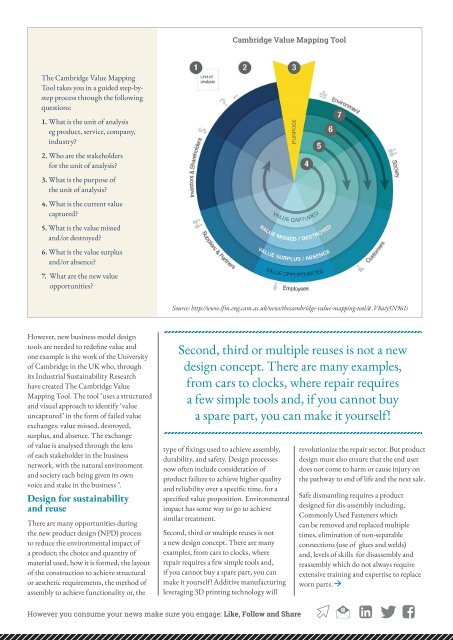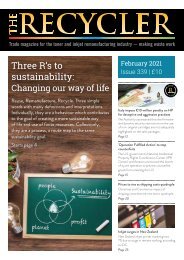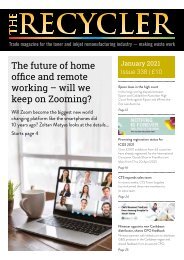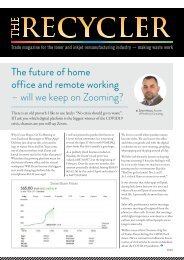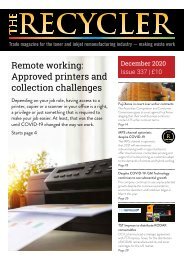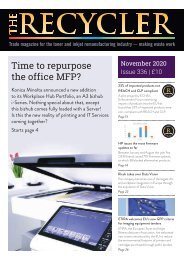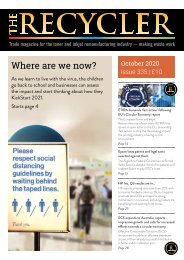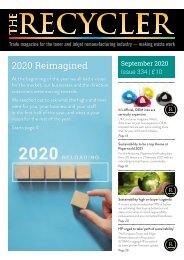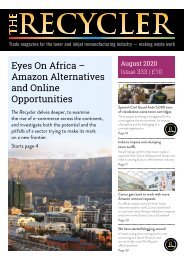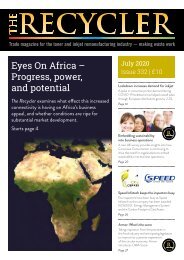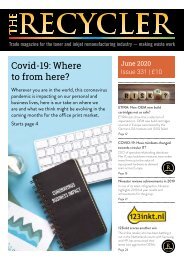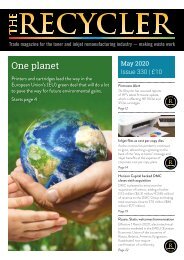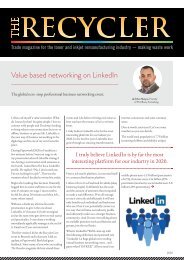The Recycler - Eco Design
You also want an ePaper? Increase the reach of your titles
YUMPU automatically turns print PDFs into web optimized ePapers that Google loves.
Cambridge Value Mapping Tool<br />
<strong>The</strong> Cambridge Value Mapping<br />
Tool takes you in a guided step-bystep<br />
process through the following<br />
questions:<br />
1. What is the unit of analysis<br />
eg product, service, company,<br />
industry?<br />
2. Who are the stakeholders<br />
for the unit of analysis?<br />
3. What is the purpose of<br />
the unit of analysis?<br />
4. What is the current value<br />
captured?<br />
5. What is the value missed<br />
and/or destroyed?<br />
6. What is the value surplus<br />
and/or absence?<br />
7. What are the new value<br />
opportunities?<br />
Source: http://www.ifm.eng.cam.ac.uk/news/thecambridge-value-mapping-tool/# .V8aiy5N961s<br />
However, new business model design<br />
tools are needed to redefine value and<br />
one example is the work of the University<br />
of Cambridge in the UK who, through<br />
its Industrial Sustainability Research<br />
have created <strong>The</strong> Cambridge Value<br />
Mapping Tool. <strong>The</strong> tool "uses a structured<br />
and visual approach to identify ‘value<br />
uncaptured’ in the form of failed value<br />
exchanges: value missed, destroyed,<br />
surplus, and absence. <strong>The</strong> exchange<br />
of value is analysed through the lens<br />
of each stakeholder in the business<br />
network, with the natural environment<br />
and society each being given its own<br />
voice and stake in the business ".<br />
<strong>Design</strong> for sustainability<br />
and reuse<br />
<strong>The</strong>re are many opportunities during<br />
the new product design (NPD) process<br />
to reduce the environmental impact of<br />
a product; the choice and quantity of<br />
material used, how it is formed, the layout<br />
of the construction to achieve structural<br />
or aesthetic requirements, the method of<br />
assembly to achieve functionality or, the<br />
Second, third or multiple reuses is not a new<br />
design concept. <strong>The</strong>re are many examples,<br />
from cars to clocks, where repair requires<br />
a few simple tools and, if you cannot buy<br />
a spare part, you can make it yourself!<br />
type of fixings used to achieve assembly,<br />
durability, and safety. <strong>Design</strong> processes<br />
now often include consideration of<br />
product failure to achieve higher quality<br />
and reliability over a specific time, for a<br />
specified value proposition. Environmental<br />
impact has some way to go to achieve<br />
similar treatment.<br />
Second, third or multiple reuses is not<br />
a new design concept. <strong>The</strong>re are many<br />
examples, from cars to clocks, where<br />
repair requires a few simple tools and,<br />
if you cannot buy a spare part, you can<br />
make it yourself! Additive manufacturing<br />
leveraging 3D printing technology will<br />
revolutionize the repair sector. But product<br />
design must also ensure that the end user<br />
does not come to harm or cause injury on<br />
the pathway to end of life and the next sale.<br />
Safe dismantling requires a product<br />
designed for dis-assembly including,<br />
Commonly Used Fasteners which<br />
can be removed and replaced multiple<br />
times, elimination of non-separable<br />
connections (use of glues and welds)<br />
and, levels of skills for disassembly and<br />
reassembly which do not always require<br />
extensive training and expertise to replace<br />
worn parts.<br />
However you consume your news make sure you engage: Like, Follow and Share


